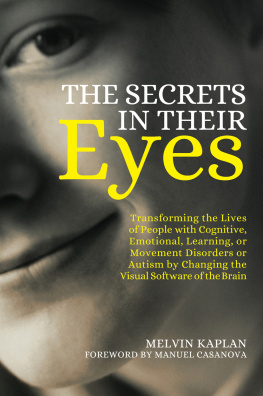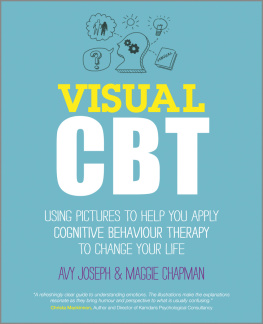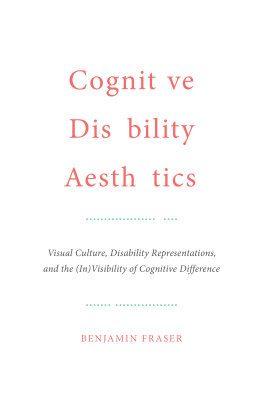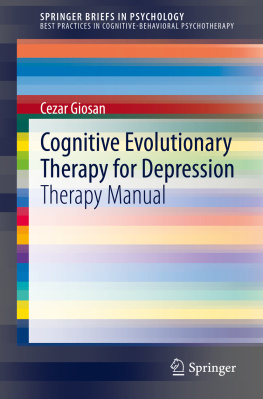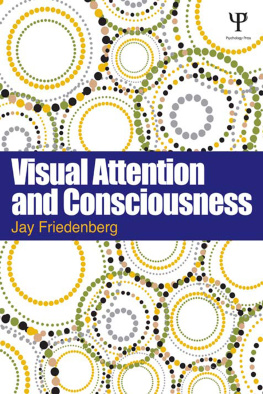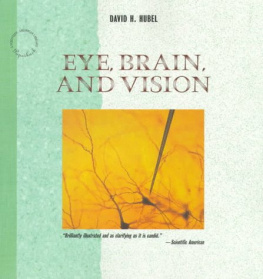
Dr. Melvin Kaplans fascinating book provides vivid accounts of his important work with dozens of patients he has treated, using yoked prism glasses to increase their awareness of our wide spatial environment. Dr. Kaplans terrific writing should encourage research into the benefits of vision therapy that will convince the medical community of the effectiveness of his approach.
Albert Yonas, Professor of Child Psychology, Institute of Child Development, University of Minnesota
In these pages, Dr. Kaplan presents a novel interactive approach to addressing severe visual deficits. Through compelling patient stories, he shows that symptoms ranging from anxiety and learning disabilities to toe-walking and scoliosis are not problems but rather the solutions patients create to compensate for visual dysfunction. Dr. Kaplan shows how these symptoms can guide clinicians to correct visual problems and, as a result, change lives for the better.
Dr. Ned Hallowell, Founder of The Hallowell Center for Cognitive and Emotional Health, New York and Boston
by the same author
Seeing Through New Eyes
Changing the Lives of Children with Autism, Asperger Syndrome and other Developmental Disabilities Through Vision Therapy
Melvin Kaplan
Foreword by Stephen Edelson
ISBN 978 1 84310 800 9
eISBN 978 1 84642 247 8
THE SECRETS IN THEIR
Eyes
Transforming the Lives of People with Cognitive, Emotional, Learning, or Movement Disorders or Autism by Changing the Visual Software of the Brain
MELVIN KAPLAN
FOREWORD BY MANUEL CASANOVA

Jessica Kingsley Publishers
London and Philadelphia
First published in 2015
by Jessica Kingsley Publishers
73 Collier Street
London N1 9BE, UK
and
400 Market Street, Suite 400
Philadelphia, PA 19106, USA
www.jkp.com
Copyright Melvin Kaplan 2015
Foreword copyright Manuel Casanova 2015
All rights reserved. No part of this publication may be reproduced in any material form (including photocopying or storing it in any medium by electronic means and whether or not transiently or incidentally to some other use of this publication) without the written permission of the copyright owner except in accordance with the provisions of the Copyright, Designs and Patents Act 1988 or under the terms of a licence issued by the Copyright Licensing Agency Ltd, Saffron House, 610 Kirby Street, London EC1N 8TS. Applications for the copyright owners written permission to reproduce any part of this publication should be addressed to the publisher.
Warning: The doing of an unauthorised act in relation to a copyright work may result in both a civil claim for damages and criminal prosecution.
Library of Congress Cataloging in Publication Data
Kaplan, Melvin, 1929- , author.
The secrets in their eyes : transforming the lives of people with cognitive, emotional, learning or
movement disorders or autism by changing the visual software of the brain / Melvin Kaplan.
p. ; cm.
ISBN 978-1-84905-736-3 (alk. paper)
I. Title.
[DNLM: 1. Vision Disorders--complications--Case Reports. 2. Vision Disorders--therapy--Case Reports.
3. Developmental Disabilities--etiology--Case Reports. 4. Mental Disorders--etiology--Case Reports. 5.
Neurobehavioral Manifestations--Case Reports. WW 140]
RE725
617.7--dc23
2014044138
British Library Cataloguing in Publication Data
A CIP catalogue record for this book is available from the British Library
ISBN 978 1 84905 736 3
eISBN 978 1 78450 140 2
To my wife Ellen, my children Marla, Stuart, David and the memory of Jeffrey
Contents
FOREWORD
Hes lost his sense of space, said Mel, examining a child in my clinic. Then he grabbed a small beanie bag and placed it on top of the childs head. The weight will serve to center him, Mel added. In less than a minute the tantrum faded away.
This was one of my many experiences with Melvin Kaplan as he examined patients with autism spectrum disorders in my laboratory, where we were recruiting volunteers for a prism study.
Id first met Melvin Kaplan several years ago through an introduction by a mutual friend, Steve Edelson, the Executive Director for the Autism Research Institute (ARI). It was Steve who arranged to have us work together on the prism study. I happen to do research involving autism, and Mel happens to be one of the pioneering figures in the field of Behavioral Optometry and visual rehabilitation. Putting us together seemed to be a perfect fit.
To be truthful, Id never heard of Behavioral Optometry before meeting Mel. As I caught up on the subject, I learned that there are only a few health-related professionals in this field. Behavioral Optometry is derived from an amalgam of ophthalmology, psychology, and education. It obviously helps going into the field if, like Mel, you are a little bit of a bookworm, youre intelligent, and you have assorted interests.
Mels talking approach was quite evident at the clinic. In dealing with children and their parents, Mel was careful to explain his findings and thought processes in laymans terms. This allowed me to learn a lot from Mels commonsensical approach to neurodevelopmental conditions.
In many neurodevelopmental conditions, individuals lack spatial awareness and have trouble with coordination, which consequently manifests as challenging behaviors.
With the aid of Mels techniques, patients exhibit significant improvements. Sometimes, these are obvious at the very first meeting. Other times, patients exhibit progress over many months while undergoing therapy. Indeed, it sometimes takes time for the brain to rewire itselfthat is, to change the basic blueprint of brain connectivity. We have used Mels technique as a complementary approach to our own therapeutic endeavors, and Mels clinical acumen has inspired me to become a better physician. Let Mel talk to you, tell you his story, and describe what he has learned from his patients. Whether you are a professional, a parent, or a person dealing with a neurodevelopmental condition yourself, it may well change your life.
Manuel F. Casanova M.D.
Gottfried and Gisela Kolb Endowed Chair in Psychiatry Professor of Psychiatry, Neurology, Anatomy and Bioengineering Vice Chairman of Psychiatry University of Louisville
Section 1
OVERVIEW
The fastest way to change behavior is through a lens.
VISION THERAPY PIONEER A.M. SKEFFINGTON
VISUAL PERCEPTUAL PROBLEMS
An Introduction
When our visual system is working correctly, it provides us with more information in less time than any other sense. Scientists estimate that 80 percent of our impressions come through our eyes, and its these impressions that largely determine who we are and who we can become. Biology gives each of us a brain; but our vision, more than any other sense, determines the way we function in the world.
Sighted people can only reach their full potential, however, when their vision is accurate. In short, stable vision is necessary for achieving a stable perception of our world. If deficits in the visual processing software of the brain stop us from developing a stable gaze, we may see in the traditional sensebut we will not perceive our world correctly, because we cant receive, integrate, decode, and interpret information about where objects are. In fact, we may not even perceive ourselves correctly.
Many of my patients have normal or near-normal focal (central) vision, which allows them to identify objects. But they have unstable ambient (peripheral) vision. Ambient vision constantly informs us about our changing worldtelling us where we are in space, and where objects in our environment areand when the brain software involved in ambient vision is faulty, we mis-see our world and our place in it.
Next page
